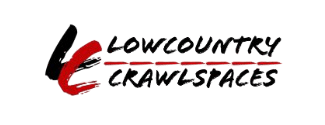Preventing Mold in Your Home: A Seasonal Guide
As the seasons transition from the blooming days of spring to the chilly winds of winter, our homes undergo various environmental changes, not all of which are visible to the naked eye. One such subtle yet significant change is the impact of seasonal shifts on mold growth within our living spaces. Mold, a persistent and often troublesome inhabitant of our homes, thrives under specific conditions that fluctuate with the changing weather patterns. This blog post delves into the intricate relationship between the changing seasons and mold proliferation, offering insights into how each season contributes to varying mold growth conditions.
Crafted with the expertise of environmental health specialists, this comprehensive guide aims to enlighten homeowners about the potential risks and preventive measures associated with mold growth throughout the year. From the dampness of spring showers fostering the ideal breeding ground for mold, to the high humidity levels of summer exacerbating mold proliferation, and not overlooking the often overlooked mold growth scenarios in fall and winter, we cover the seasonal peculiarities that influence mold dynamics in residential settings.
Our goal is to arm you with the knowledge to proactively identify, prevent, and address mold growth in your home, ensuring a healthier living environment for you and your loved ones. Through expert advice, practical tips, and evidence-based strategies, this blog post will guide you through the steps to mitigate mold growth effectively, regardless of the season.
Join us as we explore the seasonal intricacies of mold growth, understanding the why and how behind mold's preference for certain times of the year over others, and what you can do to keep your home mold-free and healthy year-round.
Understanding Seasonal Mold Risks
The shifting seasons bring with them a myriad of changes, not just in the landscape but also within the very walls of our homes. One such change, often unnoticed until it becomes a significant problem, is the risk of mold growth. Mold, a ubiquitous presence in both outdoor and indoor environments, can pose various health risks and structural damage to homes if not properly managed. This section of our blog delves into the seasonal dynamics of mold growth, highlighting how different seasons affect mold proliferation and what homeowners can do to mitigate these risks.
Mold Growth Factors Across Seasons
Mold growth is not a static issue; it fluctuates with seasonal changes, primarily influenced by temperature, humidity, and weather patterns. Understanding these factors is crucial in preventing mold growth throughout the year.
- Spring: The season of renewal often brings increased rainfall and humidity, creating damp conditions ideal for mold. Rapid temperature changes can also lead to condensation, another contributor to mold growth.
- Summer: High temperatures and humidity levels during summer create the perfect breeding ground for mold, especially in poorly ventilated or air-conditioned homes.
- Fall: As temperatures begin to drop, homes are closed up, and heating systems are turned on, potentially trapping moisture inside and encouraging mold growth in hidden areas.
- Winter: The cold season might seem less conducive to mold, but heating systems can create warm, moist environments in certain parts of the home, particularly in areas with poor insulation or ventilation.
Identifying Seasonal Vulnerabilities in Your Home
Each season not only influences mold growth differently but also affects various areas of the home in distinct ways. Recognizing these seasonal vulnerabilities is the first step in protecting your home from mold.
- Spring and Summer: Pay close attention to basements, crawl spaces, and attics, where humidity and condensation can accumulate. Ensure proper ventilation and consider using dehumidifiers in prone areas.
- Fall and Winter: Inspect around windows, roofs, and pipes for leaks or condensation. Keep your home well-ventilated and maintain a consistent indoor temperature to prevent cold surfaces from attracting moisture.
By proactively addressing these seasonal vulnerabilities, homeowners can significantly reduce the risk of mold growth and its associated health and structural hazards.
Spring Mold Prevention
As the snow melts and the world outside transitions into the vibrant colors of spring, our homes face a new set of challenges. Among these, the risk of mold growth significantly increases due to higher humidity levels and frequent rainfall. Understanding how to combat these seasonal changes is crucial in maintaining a healthy and mold-free home. This section of our blog offers expert strategies for preventing mold during the spring, focusing on managing moisture and ensuring proper cleanliness and ventilation.
Addressing Springtime Humidity and Rainfall
The arrival of spring is often accompanied by an increase in humidity and rainfall, creating the perfect breeding ground for mold within our homes. Mold thrives in moist environments, and the additional moisture from springtime weather can exacerbate mold growth if not properly managed. Here are strategies to help you control indoor humidity and protect your home from mold:
- Use Dehumidifiers: Place dehumidifiers in areas of your home that are prone to high humidity, such as basements, bathrooms, and kitchens, to help maintain a drier environment.
- Maintain Gutters and Downspouts: Ensure that your gutters and downspouts are clean and functioning correctly. This prevents water accumulation around your home's foundation, which can seep into basements and crawl spaces, fostering mold growth.
- Fix Leaks Promptly: Inspect your home for any leaks in the roof, walls, or plumbing. Addressing leaks promptly can prevent water from accumulating and creating moist conditions that mold spores can exploit.
Spring Cleaning and Ventilation
Spring cleaning is more than just a tradition; it's a critical step in preparing your home to ward off mold growth. As temperatures rise, improving ventilation becomes equally important to reduce indoor humidity levels. Here are tips to ensure your spring cleaning efforts and ventilation improvements effectively prevent mold:
- Thorough Cleaning: Remove clutter and clean areas where mold is likely to grow, such as bathrooms, kitchens, and basements. Pay special attention to cleaning fabrics, carpets, and upholstery that can retain moisture.
- Ventilate Your Home: Open windows and use exhaust fans in high-moisture areas to increase air circulation and reduce humidity levels. This is especially important during activities that produce a lot of moisture, such as cooking, showering, and doing laundry.
- Inspect and Clean HVAC Systems: Ensure that your heating, ventilation, and air conditioning (HVAC) systems are in good working order. Clean or replace filters as recommended by the manufacturer to prevent mold spores from circulating throughout your home.
By implementing these strategies, you can significantly reduce the risk of mold growth in your home during the spring. Remember, the key to mold prevention is controlling moisture levels and ensuring your home is clean and well-ventilated. Stay ahead of mold this spring by taking proactive steps to protect your living space.
Summer Mold Prevention
The summer months bring warmth and longer days, but they also introduce a heightened risk for mold growth in our homes due to increased humidity and heat. Understanding how to navigate these challenges is crucial for maintaining a healthy living environment. This section offers expert advice on preventing mold during the summer by focusing on controlling indoor humidity and paying special attention to areas that are particularly vulnerable to mold in humid conditions.
Controlling High Humidity and Heat
One of the key factors contributing to mold growth during the summer is the rise in indoor humidity levels, exacerbated by high outdoor temperatures. Effective management of indoor humidity is essential to prevent mold. Here are strategies to help you keep humidity in check and your home mold-free:
- Utilize Dehumidifiers: Deploy dehumidifiers in parts of your home that are most affected by high humidity. These devices can significantly reduce moisture levels in the air, making your home less hospitable to mold.
- Leverage Air Conditioning: Air conditioners do more than cool the air; they also reduce humidity. Use air conditioning to maintain a comfortable and dry indoor environment. Ensure your AC unit is properly serviced and the filters are clean to improve efficiency and air quality.
- Monitor Humidity Levels: Consider using a hygrometer to monitor the humidity levels in your home. Aim to keep indoor humidity below 60% to deter mold growth. Adjust your use of dehumidifiers and air conditioning based on these readings to maintain optimal conditions.
Preventing Mold in Damp Areas
Certain areas of the home, such as basements, bathrooms, and kitchens, are more prone to mold growth due to their naturally higher moisture levels, especially during the humid summer months. Here's how to address these vulnerabilities:
- Basements: Ensure good drainage around your home to prevent water from entering the basement. Use a dehumidifier to keep the area dry and inspect for any signs of water leakage or condensation.
- Bathrooms: Use exhaust fans during and after showers to remove excess moisture. Regularly clean and dry shower curtains, walls, and floors to prevent mold from taking hold.
- Kitchens: Ventilate when cooking and wash dishes to avoid excess moisture. Keep the area clean and dry, particularly around the sink and appliances that use water.
By implementing these targeted strategies, you can significantly reduce the risk of mold growth in your home during the summer. Controlling humidity and paying special attention to damp areas are key steps in creating a healthier, mold-free environment for you and your family.
Fall Mold Prevention
As the vibrant leaves of autumn begin to fall, signaling the transition from the warm days of summer to the cooler, wetter months ahead, it's crucial to prepare your home for the changes that accompany this season. Fall brings with it the risk of increased indoor moisture levels, not just from the cooler weather but also from increased rainfall, which can create ideal conditions for mold growth. This section of our blog focuses on essential steps homeowners can take to prevent mold during the fall, emphasizing the need to keep homes watertight and maintain the exterior to prevent water accumulation.
Preparing for Cooler, Wet Weather
The key to preventing mold growth in the fall is to ensure that your home is ready to withstand the cooler, wetter weather. Here are steps to make your home watertight and insulated, reducing the risk of mold growth:
- Inspect and Repair Your Roof: Check your roof for any signs of damage or leaks. Small issues can lead to significant water intrusion, which can encourage mold growth. Repair any damaged shingles or flashing to ensure your roof is watertight.
- Seal Windows and Doors: Check the seals around windows and doors for any gaps or wear. Apply weather stripping or caulking where necessary to prevent moisture from entering your home.
- Insulate Pipes: As temperatures drop, uninsulated pipes can condense moisture from the air, leading to water accumulation and mold growth. Insulate any exposed pipes in areas like the basement, attic, and crawl spaces.
Yard Cleanup and Exterior Maintenance
Maintaining the exterior of your home and yard is just as important as the interior when it comes to preventing mold growth. Here are key maintenance tasks to focus on:
- Clean and Repair Gutters: Ensure that your gutters are free of leaves and debris. Clogged gutters can cause water to overflow and accumulate around your home's foundation, potentially leading to mold growth in basements and crawl spaces.
- Maintain Yard Grading: Check the grading of your yard to ensure that it directs water away from your home. Proper grading prevents water from pooling around your foundation, which can seep into your home and create moist conditions favorable for mold.
- Trim Trees and Shrubs: Keep trees and shrubs trimmed and away from your home's exterior. Overgrown vegetation can retain moisture and direct it towards your home, increasing the risk of mold growth.
By taking these proactive steps in the fall, you can significantly reduce the risk of mold growth in your home. Preparing your home for the cooler, wetter weather not only helps in mold prevention but also contributes to a healthier living environment for you and your family. Stay vigilant and maintain your home to enjoy a mold-free autumn.
Winter Mold Prevention
Winter, with its cold temperatures and heated indoor environments, presents unique challenges in the fight against mold growth in our homes. While we seek comfort in the warmth of our heating systems, these very conditions can inadvertently foster environments conducive to mold development. The key to mold prevention during the winter months lies in effectively managing indoor heating and moisture, as well as ensuring our homes are properly insulated and sealed against the elements. This section of our blog provides expert advice on how to prevent mold during the colder months by focusing on these critical areas.
Managing Indoor Heating and Moisture
The balance between heating your home and maintaining adequate ventilation is crucial to preventing mold growth in winter. As we increase indoor heating, the air becomes warmer and can hold more moisture, which can lead to condensation on cooler surfaces such as windows and walls. This condensation provides the perfect environment for mold to grow. Here are strategies to manage heating and moisture:
- Use Humidifiers Wisely: If you use humidifiers, monitor indoor humidity levels to ensure they do not exceed 40-60%, as higher humidity can encourage mold growth.
- Ventilate Regularly: Open windows briefly daily to allow fresh air in and reduce moisture levels, even when it's cold outside. This is especially important in areas with high moisture levels, such as kitchens and bathrooms.
- Utilize Exhaust Fans: Make sure to use exhaust fans in the bathroom and kitchen when cooking or showering to help remove excess moisture from the air.
Insulation and Sealing
Proper insulation and sealing of your home not only keep you warm during winter but also prevent moisture from entering and condensation from forming, both of which can lead to mold growth. Here's how to ensure your home is well-insulated and sealed:
- Inspect and Upgrade Insulation: Check the insulation in your attic, walls, and floors. Proper insulation helps maintain consistent indoor temperatures and reduces the risk of condensation.
- Seal Windows and Doors: Check for drafts around windows and doors. Use weather stripping or caulk to seal any gaps that could let in cold air and moisture.
- Protect Pipes from Freezing: Insulate water pipes in areas like basements and crawl spaces to prevent them from freezing and bursting, which can lead to significant water damage and mold growth.
By implementing these winter mold prevention strategies, you can create a healthier and more comfortable living environment for you and your family. Managing indoor heating and moisture, along with ensuring your home is well-insulated and sealed, are key steps in preventing mold growth during the winter months. Stay warm and mold-free by taking proactive measures to protect your home.
FAQs
Contact Lowcountry Crawlspaces Today!
Lowcountry Crawlspaces will do everything we can to ensure your experience with us is excellent.
Request A FREE Estimate
CHECKOUT RECENT POST



Schedule Your FREE Crawl Space Evaluation Today
There Is No Crawl Space Job We Can’t Fix!




